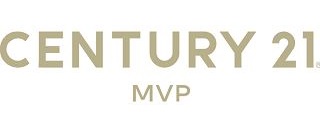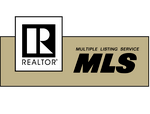With the interest rates coming down we are being asked by investors to give us more information about why people invest In the Smokies.
These are the five best reasons our clients have invested over the years.
- Well purchased Real Estate is an appreciating asset
(In the Great Smoky Mountains, the average appreciation is 10% overall for the last 10 years, with Short Term Rental (STR’s) leading the way at an even higher rate.
For example, a two bedroom in Starr Crest Resort – 20 years ago sold for $300,000. Gross rental revenue started at around $30,000. Sales prices reached a high of $450,000, and then we had a valley during the economic downturn of 2008 where values dropped and then began to rise again. Today this exact same cabin sells for approximately $750,000 and offers owners a gross revenue of $75,000.
The history of real estate in the United States is that we have peaks, and we have valleys, but it is an overall upward trajectory. Think of the house you grew up in. What did your parents pay for it? What is the value of that same home today?
In some years, it is possible to “flip a house” for a profit. That means that you hit the market just before it peaks as property is appreciating so quickly that you can buy one year and sell the next year for a profit. However, in the Great Smoky Mountains today, we are in a flat market. This means you might even see a very slight decrease in price. No one can predict when a market is going to hit the valley and begin to start the climb back to its new peak. We are not in the same place that we were in the economic downturn of 2008, which became a worldwide recession in 2009. The foreclosures that we saw in the Great Smoky Mountain cabin industry in 2008 were a result of 100% financing. The owners with no down payment could walk away with no other consequences except they couldn’t purchase real estate for a few years. So they did walk away! Rental revenue stayed strong, but owners were also laboring under 40/60 splits with their rental companies.
I am asked continuously. “Do you think we will have foreclosures or “great deals” around the corner?” Most of us who analyze this day in and day out agree that the answer is no. This is because the cabin owners who purchased in the last few years have extremely low interest rates, between 2% to 4%. Although the gross rental revenues skyrocketed during Covid, they have returned to “normal,” right above the revenue in 2020-2021 which is still quite able to cover the mortgages of those buyers. A few may have bought at the top of the market and counted on “Covid” rental numbers, so they may not make the handsome gross rentals they desired, but they are a long, long way from letting the property go into foreclosure or a “fire sale.”
So, what does that mean? That means you need to purchase property that is solid, and that checks all the investment boxes – meaning you need to make sure the cabin provides what most guests want in an overnight cabin stay in order to get your money working for you at maximum benefit.
Most people agree that cash is a depreciating asset due to inflation. If you keep your money in the bank and do not invest it, you are losing money as tomorrow will not buy as much with that money as you are able to buy today. Bonds can fluctuate in value, and inflation tends to make them less valuable. Stocks can appreciate if you choose the right ones, but they can be volatile and do not have the other benefits you can find in the right real estate investments. Real estate has outperformed all these investments year after year. Most wealth in America is due to real estate investing long term.
For example: On average, a cabin purchased 10 years ago has almost tripled in value and a cabin purchased 5 years ago has doubled in value. When looking for the right property that can continue to increase in value at the highest amounts, there are two key criteria to consider as you tour properties to buy. First, you must evaluate property and make the best purchase possible. Secondly, it’s important to remember that upgrades and maintenance bring more value in the long run. So, the money you put in becomes a way to leverage your real estate asset even more.
- There are Tax Savings in Real Estate not found in other investments
For example, depreciation. You are allowed to depreciate the building itself – you can do this in an accelerated manner or slowly each year. This will give you tax savings- which you should think about as money earned through your real estate investment. If you depreciate your cabin in an accelerated manner, it will give you a large tax deduction the year or two after you purchased it. This can replace your down payment allowing you to continue to invest. It is also good for a year in which you are showing more income through good investments or sales of real estate or handsome rental revenue from the property.
In addition to depreciation, a wonderful perk the government offers you is what’s known as a 10-31 exchange. You can exchange like property in an tax deferment program indefinitely on the gains you realize through the sale. Talk to your CPA or accountant to learn more about how this program works.
- Alternative mortgage options
You can apply for different types of mortgages to purchase your investment through second home loans, DSCR loans, Home Equity Loans, etc. So, the only actual money you have in a real estate investment is the down payment, the closing costs, and any amount spent for repairs, upgrades, and maintenance. What a wonderful way to build wealth! Use other people’s money (your lenders).
- Let the cabin pay for itself
The rental revenue generated through a short-term rental (STR) can pay for the mortgage on the property. A typical Smoky Mountain Investment cabin will pay for the utilities, the mortgage, the insurance, the property taxes, the upkeep, management fees, advertising, etc. The right investment cabin can also provide you with a surplus revenue. Currently properties where the purchase price is around $500,000, a one- or two-bedroom cabin will offer a gross rental income of $50,000- $60,000 per year. A $1 million property can reach a gross annual rental income of $100,000- $120,000, while a $2.5 million property can reach a gross annual rental income of $300,000. Before making your purchase, you will need to do a financial proforma to determine the expected cash flow projections. This proforma can project the utility expenses, your mortgage, your insurance, your taxes, any management fees to see what your cash flow is going to look like. You are looking to cover your expenses and realize a profit, and the proforma is the best tool available to give you a realistic picture of how well the property can do in achieving that goal.
- Your renters are paying for your vacation
The money you normally spend on a vacation is now a savings. Visits can be tax deductible if you are coming to check on your investment! Finally, it can look like this: you purchase a cabin for a down payment of up to 20% plus closing costs on a cabin where your purchase price was, for example, $800,000. You get a management company to operate it for you and earn enough in rental income to cover the cost of the mortgage and all related expenses, ideally with enough to spare that you are making money. Then you sell 7 years later when the cabin has doubled in value to $1,600,000. But you only owe about $600,000, as you used the money the guests provided you over the years to pay the mortgage down during that period, all the while making money in gross rentals, saving in taxes, and enjoying vacations – a true win-win! Now you have almost $1,000,000 after 7 years. (Of course, that’s not counting the tax savings and income it generated for you each year.) You could even take that money and reinvest it in an even bigger cabin to increase the amount of rental income flowing!






